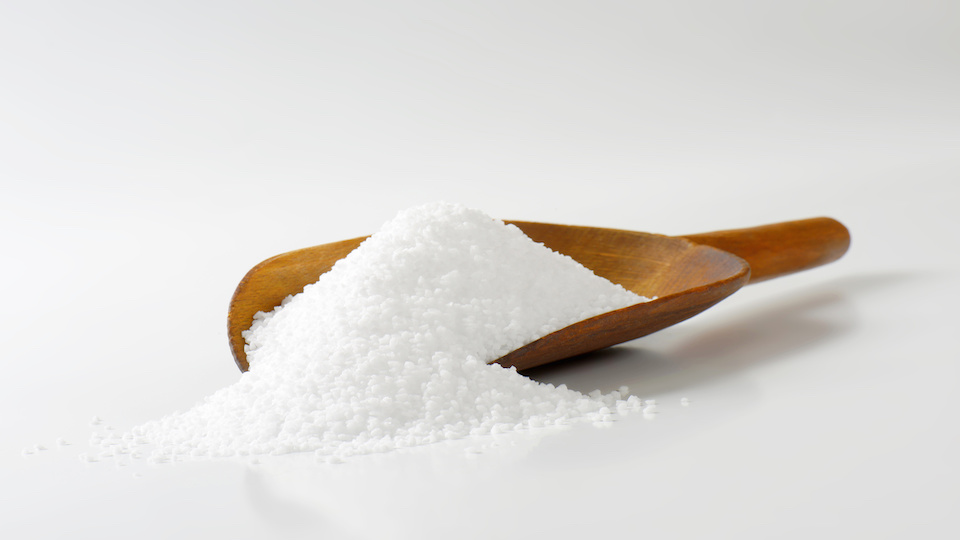Epsom salt is familiar to gardeners as a fertilizer. When you find your plants looking tired, giving them a small dose of Epsom salt is a quick way to rejuvenate them. This is particularly true for ferns and palms. Roses, azaleas, tomatoes, peppers, and fruit trees also respond well to its regular application with increased flowering and yield. If that’s not enough, this inexpensive non-toxic solution can help keep pests out of your garden, too.
Organic gardeners are always on the lookout for non-toxic ways to protect their plants from pests. Epsom salt fits the bill because it is safe for your plants, as well as the environment when used in moderate amounts. It is simply magnesium sulfate salt in crystalline form. Both magnesium and sulfur are essential micronutrients that plants require for healthy growth.
Epsom salt quickly dissolves in water and makes magnesium and sulfur available to plants in an easily absorbable form. Moreover, it helps plants absorb other essential nutrients, promoting their overall growth and wellbeing. Thus, one way Epsom salt protects plants from pests could be by keeping them healthy and strong. Healthy plants have a natural resistance to pests and diseases.
The pest control function of Epsom salt doesn’t end with this indirect effect, however. The direct action of the salt on soft-bodied pests could be mainly dehydrating them to death. It is the same effect sprinkling of common salt has on slugs. The high concentration of salt draws out water from their tissues and eventually kills them. Epsom salt does the same. The difference is that, unlike common salt, which mainly contains sodium chloride, Epsom salt adds to soil fertility as it breaks down into its components.
There are several ways you can use Epsom salt, depending on the kind of pests troubling your plants.
Foliar spray
Mix 1 cup of Epsom salt with 5 gallons of water. Stir well to dissolve. Use the solution as a spray on plants affected by aphids, mealybugs, and other sap-sucking insect pests. To prepare a smaller quantity, use 2 tablespoons per gallon of water.
Since the foliar spray comes in direct contact with plant tissues, don’t use it at a higher concentration. While some small pests such as aphids, whiteflies, and mealybugs may perish on contact with the solution, repeated applications may be necessary to handle tomato hornworms and other leaf-eating caterpillars. As for insects with hard exoskeleton such as beetles, it may only act as a deterrent at best.
Dipping solution
When you transplant plants into pots or to the garden bed, dip the root ball in Epsom salt solution. It can protect the plant roots from pests and parasites in the soil. Seeds also may be soaked in the solution before sowing, to make them less appealing to ants and other scavengers.
Sprinkling Epsom salt
To keep away slugs, snails and pests that crawl up the stems, sprinkle dry salt around the plants to create a barrier. If it doesn’t deter them, the sharp edges of the salt crystals may abrade their soft skin and even cut into the exoskeletons, similar to diatomaceous earth, and will eventually kill them.
Gardeners often sprinkle some Epsom salt into the pits they dig for their young plants. This gives them a boost as they spread their roots, but it may also protect the roots from grubs and soil parasites such as nematodes.
Broadcasting
This is a way to treat large areas of the garden such as lawns to make them less attractive to pests. You may need to broadcast 2-3 pounds of Epsom salt per 1000 square feet of lawn or garden bed. The salt will eventually get dissolved as you water the area. Reapply once every two months.
Safety concerns
Some gardeners are concerned that using Epsom salt in the garden for pest control might cause soil toxicity from an excessive build-up of magnesium and sulfur. It’s a legitimate concern; too much of a good thing can be harmful, and that applies to any fertilizer or other soil additive, be it lime or even manure.
When we buy general fertilizers, we always check their NPK values, which denote the availability of nitrogen, phosphorus, and potassium. These, of course, are the three minerals plants require in the highest amounts. What many people do not realize is that magnesium and sulfur, along with calcium, are the next three essential minerals and their deficiency is just as detrimental to plant growth.
Using Epsom salt for pest control is not likely to cause soil toxicity as long as it is used in moderation. Most of the magnesium and sulfur from the salt is absorbed by the plants and quickly used up. Magnesium, in particular, is essential for the creation of chlorophyll, the photosynthetic molecule of plants. Magnesium is the central atom or the heart of chlorophyll, and it is as important as iron is to the hemoglobin in our blood. Now, if you use Epsom salt on ferns and see them turning lush green, you’ll know why.
-Susan Patterson



